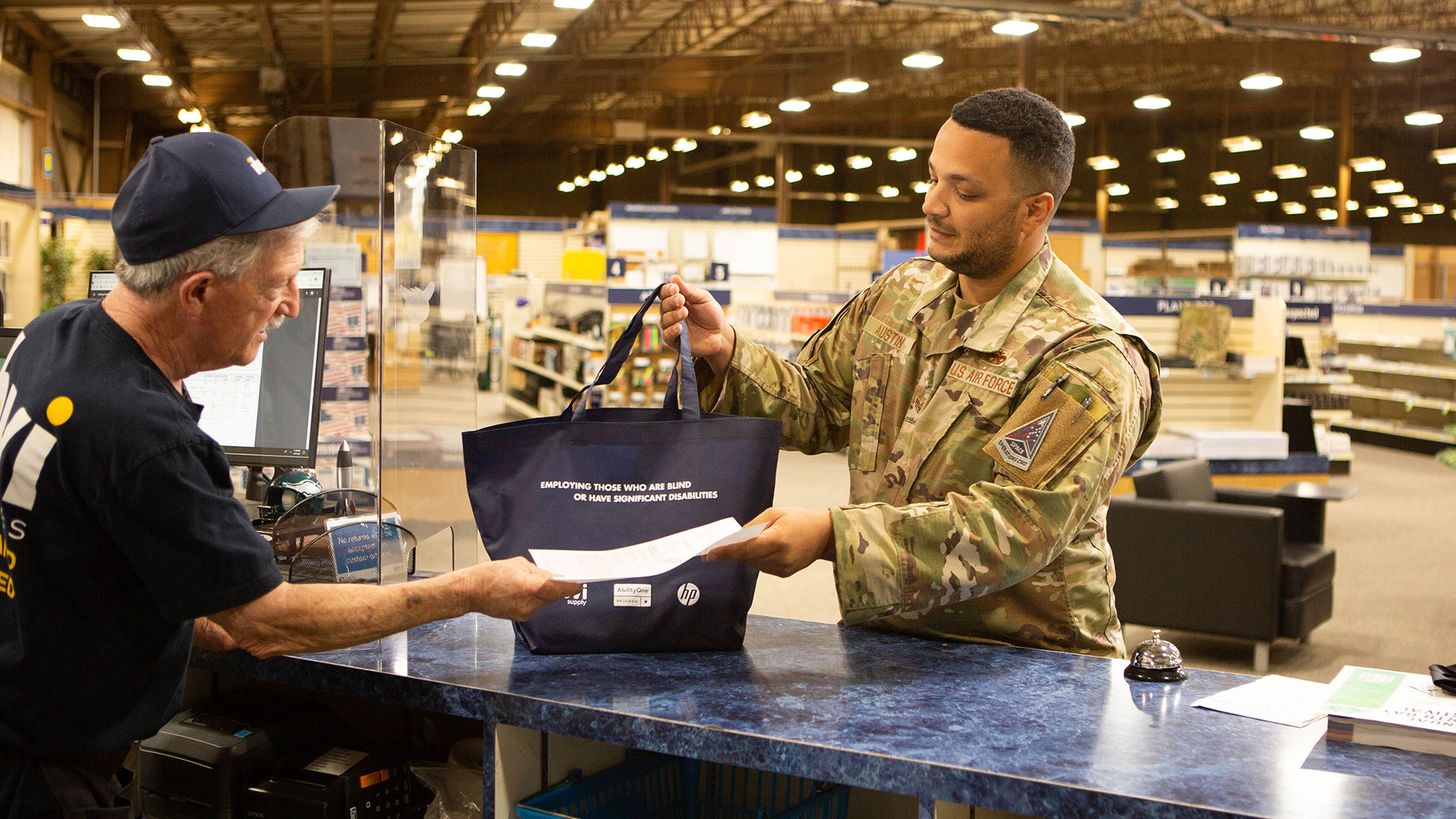Every organization can make their space better for the blind or visually impaired
I heard a saying recently that went, “Everyone is welcome, but family gets to move the furniture.” This means that while you may “feel” like you’re a welcoming organization, what truly makes people feel like a part of the team is when they can effect change. Such is the case for people with disabilities, specifically those who are blind or visually impaired when they enter the workplace.
Roughly 70% of people who are blind or visually impaired are unemployed, which is why we at IBVI work hard to bring awareness to that reality and try to improve those numbers. We employ around 120 people who are blind or visually impaired, and we even have an official day in Milwaukee dedicated to our advocacy for blind employment awareness. But some organizations might ask, what exactly can we do to make things easier for the blind community?
In addition to finding opportunities to hire blind and visually impaired workers, there are practical steps that you can take around your workplace to make it more inviting for those workers, setting them up for success.
Textured Floors
At IBVI, we employ a common system to aid blind or visually impaired workers in our hallways. At “intersections” at our office—or at critical spots like outside of a conference room—the floor texture changes from carpet to hardwood or laminate. This acts the same way a “warning track” does in baseball. It alerts the person walking that there’s a change, and they know they can confidently turn down another hallway or go into a room.
As the blind community is very resourceful, a change like this doesn’t affect the sighted workers at all, but is an impactful tool that blind workers can use to get around more easily.
Doors with Windows
Another practical change you can make to your office workflow is to install doors that have windows on them. While this doesn’t so much help the blind workers, it helps the sighted workers to pay attention to who is on the other side of the door when opening it. If a blind worker is coming from the other direction, they likely won’t notice the door opening and therefore could have an unnecessary collision.
This exemplifies the reality that every person in the office has a role in making the workplace more accessible. Whether it be to be more accommodating and mindful of people’s limitations, or simply paying attention to your surroundings—like in this example—everyone has the ability to make others feel welcome.
Assistive Technology
Modern technology has come a long way in how it can help those with disabilities operate in day-to-day life. There are now devices that can read screens and enlarge pictures and text in real-time, so people who are blind or visually impaired have many more options for jobs. At IBVI, for example, we have people who work in all areas of our business, from hand assembly on the factory floor to customer service and IT.
If you’re an employer, it’s important to get an understanding of the technologies that are available so you can offer them to prospective or current employees. Sometimes an employee will know what they need, and other times it will be about trying to find what works best. A short list of commonly used devices include:
- OrCam My Eye – A device that attaches to your glasses that can read text out loud, verify typed information, and assist with various speech-to-text tasks.
- OrCam Read – Similar to the above device, it looks like a pen or laser pointer, and it can read text on any paper or screen.
- Acrobat HD by Enhanced Vision – A camera that you place underneath what you’d like to view, and it enlarges the print.
- JAWS (Job Access With Speech) by Freedom Scientific – This helpful computer screen reader program allows blind and visually impaired users to read the screen either with a text-to-speech output or by a refreshable Braille display.
In a recent blog post, we go into much more detail about how we equip our employees with the appropriate technology. Check it out if you’re looking for more information!
Accessibility to Public Transportation
As one of our employees Jeff Young recently said, “One of the biggest challenges for being a blind person is transportation.” Most people take it for granted, but all blind and visually impaired workers have to coordinate transportation every day. Many of them either take rideshare services like Uber and Lyft, take public transit, or have someone drive them to work every day.
Now, you may not be able to change the bus routes in your area, but you can be mindful of the coordination and effort that goes into simply getting to work for an employee who is blind or visually impaired. You can provide them with details on where the nearest public transportation is, work out a schedule for them that makes it easier for them to commute, and you can also ensure that there is a safe, comfortable place for them to wait for pickup outside your offices.
Willingness to Listen and “Say Yes”
This last tip is more about your mindset. Beyond all these practical changes, the best thing you can do is to be understanding and flexible. We’ve seen first hand that people who are blind or visually impaired are hard-working, resourceful and loyal. In other words, they want things to work out, and they’re not just looking for things to make your job difficult. They are eager to join a team and make a positive impact.
That said, especially when you’re onboarding new employees, you should ask them what they need in order to be successful. If they ask about a technology or accommodation that you’re unfamiliar with, look into it and see if you can make it work. We at IBVI feel strongly that if people have the right tools, technology, and training, they’ll be able to succeed in nearly any role. So we encourage you to do your part to be flexible, understanding and welcoming.
And in this case, by providing some infrastructure changes or a new technology or device, you’ll be letting them “move the furniture” in a way that makes them feel at home.


